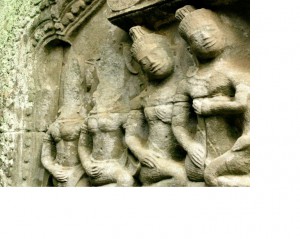From Illicit to Licit: The Laundering of Looted Antiquities into Legitimate Artworks
The illicit antiquities trade is a criminal industry that spans the globe, but its true nature remains unknown. A study of Cambodia presents an opportunity to ground it in reality. Thieves have been looting the country’s archaeological sites at a devastating speed and scale. The scars from this plunder have been recorded in detail, and a growing body of research has shed light on the final destination of these stolen objects, the international art market. The path of purloined artefacts has been more difficult to document. Most enter the trade illicit and exit licit .
This research aims to better comprehend this looted-to-legitimate transformation by tracing the journey of antiquities from Cambodia, through the market, to overseas collections. This study is focusing on statuary from Koh Ker, the short-lived capital of the ancient Khmer Empire, whose distinct style covered a limited span of time and geography. Due to the site’s remoteness, the temple complex was largely untouched until 1970, when Cambodia plummeted into decades of civil war, genocide, and foreign occupation. During that conflict, Koh Ker was heavily plundered. As a result, despite their relatively small number, its statues form a disproportionate percentage of Cambodian art in foreign collections.Koh Ker is thus ideal for a case study on antiquities trafficking. This research also presents an opportunity to supplement other work in the field. With this goal in mind, it will focus on the following questions:
• What is the trajectory of pillaged antiquities from Koh Ker to overseas collections?
• How to explain the legal transformation from looted antiquity to legitimate artwork?
– Do existing theoretical models provide an adequate explanation?
– What are the roles of individuals, organizations, and jurisdictions?
– What are the impacts of political, economic, social, legal, and practical factors, especially peace, war, and occupation?
• Can more effective legislation and public policy be formulated to combat antiquities trafficking?

